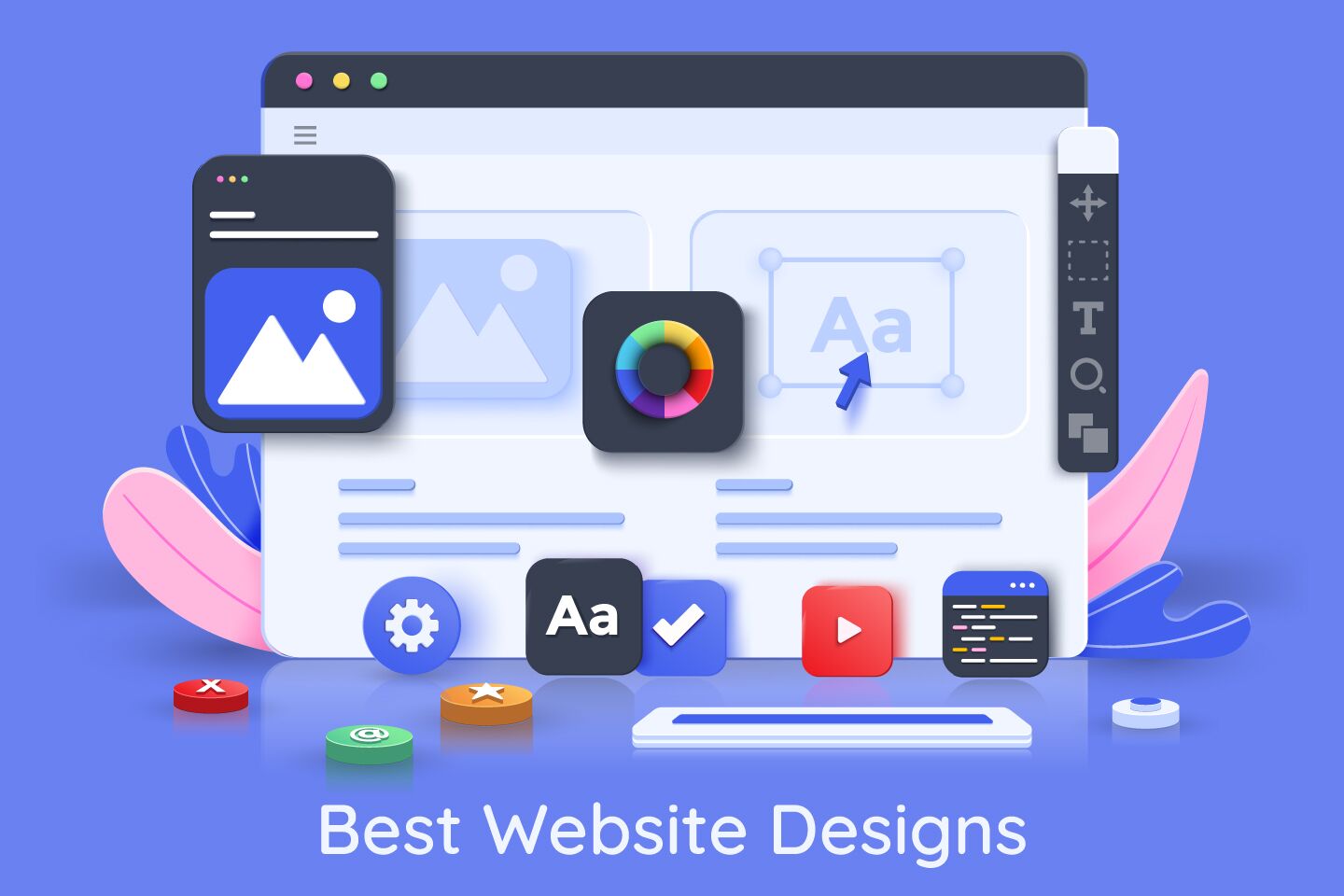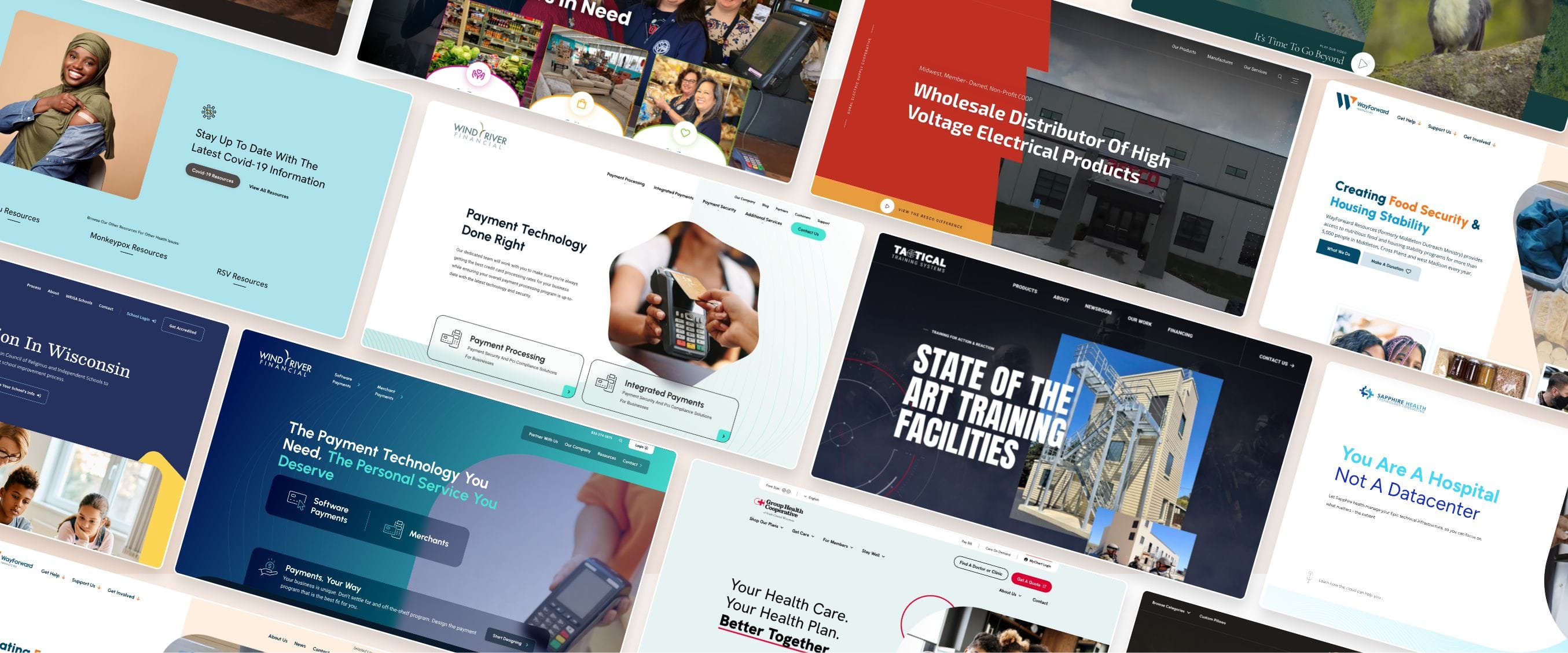Leading Tips for Producing an Impactful Internet Site Design That Converts
In today's electronic landscape, the value of an impactful website style can not be overemphasized, specifically when it comes to converting visitors into customers. To accomplish this, one have to think about a selection of factors, including understanding the target audience, prioritizing user experience, and optimizing for mobile systems. Moreover, the strategic use engaging call-to-actions and a well-defined aesthetic pecking order plays a critical duty in leading users with their trip. As we discover these necessary components, it ends up being apparent that the success of your site rests on more than simply aesthetics; it calls for a thoughtful strategy to layout and performance.

Understand Your Target Target Market
Comprehending your target audience is fundamental to effective internet site style, as it prepares for developing an appealing user experience. Recognizing who your customers are, including their demographics, choices, and habits, enables developers to tailor the internet site's material, format, and performance to meet certain requirements.
Conducting detailed marketing research is vital in this process. Studies, meetings, and analytics can supply valuable understandings into customer expectations and pain points. By assembling this data, developers can create customer characters that represent different sectors of the audience, making certain that design decisions are educated and relevant.
Furthermore, recognizing the target audience assists in picking appropriate style components such as color design, typography, and images that reverberate with users. A site that talks straight to its audience fosters a feeling of link and trust, motivating longer check outs and greater conversion prices.
Ultimately, a user-centered technique to internet site design not only improves individual satisfaction yet also supports service purposes by driving involvement and loyalty. By prioritizing the requirements and preferences of the target market, a site can properly offer its objective and attain desired outcomes.
Prioritize Individual Experience
To improve the general efficiency of a site, prioritizing customer experience (UX) is necessary (Website Design). A properly designed UX ensures that visitors can browse the site easily, locate details quickly, and involve with content meaningfully. This causes boosted individual contentment and greater conversion rates
Begin by executing intuitive navigation. Menus should be realistically structured, allowing users to situate vital locations of the site with minimal initiative. Uniformity in style aspects, such as color design and fonts, cultivates experience, which is vital for preserving user involvement.
Additionally, think about the loading rate of your web site. A delay of simply a few seconds can bring about considerable drop-offs, as users are less most likely to wait on a slow-loading page. Simplifying pictures and optimizing code can improve performance and preserve visitors.
By prioritizing individual experience, you not just create a more satisfying setting for site visitors yet also strengthen your brand name's trustworthiness. Inevitably, an emphasis on UX is a financial investment in the lasting success of your website.
Optimize for Mobile Gadgets
Enhancing for mobile gadgets is important in today's electronic landscape, where a raising variety of customers accessibility websites through smartphones discover here and tablets. A mobile-friendly design not just enhances individual experience however also plays a significant function in enhancing internet search engine positions. To attain this, it is vital to embrace a responsive layout that immediately adapts to numerous screen dimensions and positionings.

Filling speed is an additional critical aspect; mobile individuals are usually much less patient and anticipate fast accessibility to details. By prioritizing mobile optimization, you make sure that your website stays affordable and effectively engages a wider target market.
Usage Compelling Call-to-Actions
A site's performance often hinges on its capacity to guide visitors toward preferred activities, making compelling call-to-actions (CTAs) important elements of design. CTAs work as the crucial points that guide users to engage with the website, whether that means buying, registering for an e-newsletter, or downloading and install a source.
To develop reliable CTAs, clarity is critical. Use succinct language that plainly interacts the activity you desire the individual to take. Expressions such as "Begin," "Join Free," or "Shop Now" not only communicate seriousness however likewise get rid of uncertainty. The placement of CTAs is similarly essential; they need to be purposefully positioned throughout the website to ensure they are quickly noticeable, specifically in high-traffic areas.
Moreover, the layout of CTAs need to stand out without being obtrusive. Use contrasting shades and clear font styles to ensure they record focus. Furthermore, think about using directional hints, such as arrows or images, to guide customers towards these buttons. By concentrating on these aspects, companies can substantially enhance user engagement, driving conversions and inevitably attaining their site's goals.
Concentrate On Visual Power Structure
Efficient website style relies heavily on a well-structured aesthetic hierarchy that overviews users with content effortlessly. By arranging elements in a fashion that prioritizes info, developers can enhance individual experience and promote decision-making. This entails using dimension, color, contrast, and spacing purposefully to draw interest to one of the most vital parts of a webpage.
Using bigger typefaces for headings and subheadings develops a clear difference between different sections, permitting users to scan content easily. Additionally, utilizing different shades for buttons and read the article calls-to-action can catch individual focus and encourage interaction. Whitespace is one more crucial component; it prevents clutter and allows customers to concentrate on key messages without diversions.
Photos and graphics need to complement the text while also adhering to the recognized pecking order, strengthening the general message (Website Design). Uniformity in layout components, such as color pattern and typography, further enhances the visual pecking order, making navigation user-friendly

Verdict
Finally, reliable web site style requires an extensive understanding of the target audience, prioritization of user experience, and mobile optimization. The strategic use engaging call-to-actions and a well-defined aesthetic pecking order additionally improves user involvement. By applying these principles, sites can achieve greater conversion prices, making sure that design components not just draw in visitors yet likewise facilitate smooth navigating and interaction. Inevitably, a well-executed web site layout serves as a critical part in driving user activities and attaining company objectives.